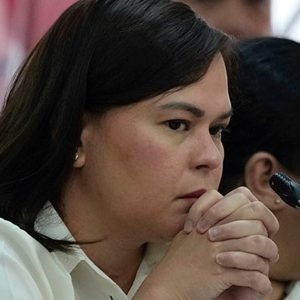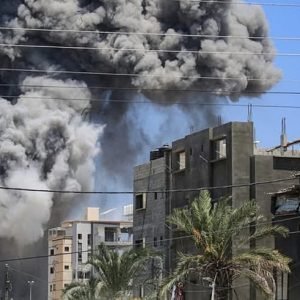
The ongoing deliberations for the 2025 General Appropriations Act (GAA) in the Philippine Congress have highlighted key areas of focus and emerging tensions in both the House of Representatives and the Senate. The proposed budget for 2025 is pegged at a substantial ₱6.35 trillion, reflecting the government’s priorities in job creation, social protection, education, and healthcare expansion. Speaker Martin Romualdez emphasized the need to scrutinize the allocation of every peso to ensure it benefits the people, particularly in areas such as the Pantawid Pamilyang Pilipino Program (4Ps), which is set to receive ₱114.2 billion but may see further increases due to congressional efforts to bolster social safety nets.
A significant aspect of the budget deliberations has been the reduction in confidential and intelligence funds (CIF), which have been decreased by 16% compared to the previous year. The allocation now stands at ₱10.2 billion, a decrease from ₱12 billion in 2024. This reduction comes amid growing public scrutiny and calls for transparency in how these funds are utilized, especially following controversial allocations in previous years to various departments, including the Office of the President, the Department of National Defense, and the Philippine Coast Guard, which are receiving considerable portions of the CIF in the 2025 budget.
The budget discussions have also been marked by concerns over specific sectors facing potential budget cuts. The Commission on Elections (COMELEC), for instance, has expressed alarm over the proposed budget cuts, which could affect their preparations for the upcoming 2025 elections. COMELEC officials warned that these reductions could compromise the timely procurement of election materials and impact voter registration processes. This issue has gained attention as the 2025 elections loom large, and the integrity of the election process is of paramount importance.
In contrast, the House of Representatives has demonstrated a swift pace in moving the budget forward, with the plenary debates expected to conclude soon. The House leadership remains optimistic that the proposed GAA will pass smoothly, as seen with the rapid approval of the ₱10.5 billion allocation for the Office of the President, which was approved in less than 10 minutes during deliberations. However, this has drawn criticism from opposition lawmakers and some members of civil society who argue that larger portions of the budget should be subjected to more rigorous scrutiny.
The proposed ₱6.35 trillion General Appropriations Act (GAA) for 2025 has stirred heated debates and divisions within the Philippine government. As the House of Representatives and Senate push toward passing the budget, serious questions arise about the priorities in this historic fiscal package. Although key areas such as job creation, education, and social protection are cited as critical focus points, a closer analysis of the budget reveals concerning trends in allocations for environment and climate action, food sovereignty, public health, and education. These sectors, which are essential to long-term national stability, seem underfunded or inadequately prioritized in the proposed spending plan.
Environmental and Climate Action: Too Little, Too Late?
Despite the Philippines’ vulnerability to climate change, especially as the archipelago is consistently battered by increasingly severe typhoons, the 2025 budget allocation for environment and climate resilience remains surprisingly lackluster. The Department of Environment and Natural Resources (DENR), responsible for overseeing the country’s environmental policies, climate resilience projects, and disaster risk reduction, has been granted only around ₱26 billion—a figure that seems inadequate considering the immense challenge the country faces in adapting to and mitigating the impacts of climate change. Moreover, the budget for renewable energy infrastructure and green initiatives appears limited compared to the ambitious goals the Philippines set in its international commitments to reducing carbon emissions.
While the government touts its climate resilience efforts, the underfunding of this sector suggests a disconnect between the urgent need for action and the resources being allocated. This shortfall raises concerns about the nation’s preparedness to withstand future environmental shocks, especially as global climate predictions become increasingly dire. The lack of substantial investment in renewable energy and sustainable public infrastructure could leave the country reliant on outdated, polluting energy systems, thereby exacerbating environmental degradation.
Food Sovereignty: Hollow Commitments to Agricultural Development
The Philippines, despite its agricultural heritage, remains heavily dependent on food imports, exposing the nation to price shocks and supply chain disruptions. The 2025 GAA proposes about ₱175 billion for the Department of Agriculture (DA), a slight increase from previous years. However, this figure barely scratches the surface in addressing the systemic issues that plague the agricultural sector—low productivity, outdated infrastructure, and the rising costs of inputs like fertilizer and fuel.
A glaring example of the misplaced priorities is the modest budget allocated to food sovereignty programs, which are essential for reducing dependency on imports. Critics argue that the government’s commitment to enhancing food production and self-sufficiency rings hollow when faced with the reality of insufficient funding. The Rice Competitiveness Enhancement Fund (RCEF), a critical initiative meant to improve rice farmers’ access to modern technology, receives only a fraction of the resources needed to close the production gap. Farmers continue to struggle under the weight of rising operational costs, exacerbated by competition from cheaper imported goods.
The lack of substantial investment in long-term agricultural reforms not only undermines the nation’s food security but also pushes more rural Filipinos deeper into poverty. Given the global challenges surrounding food supply chains, the underfunding of local agriculture could pose serious risks to the nation’s food sovereignty in the years ahead.
Public Health Services: Neglecting the Foundations of a Resilient Society
The COVID-19 pandemic exposed the Philippines’ fragile healthcare infrastructure. While public health continues to be a major concern, the 2025 budget allocation for the Department of Health (DOH) remains inadequate to meet the growing demands of an overburdened health system. The proposed ₱306 billion budget, while significant, falls short of what is required to fully modernize hospitals, expand public health services, and hire enough medical professionals to close the gaps in the healthcare workforce.
This allocation also neglects the broader context of ongoing public health challenges, such as the rise in non-communicable diseases, the need for mental health services, and the increasing frequency of outbreaks due to climate change. Public hospitals, which serve as the backbone of the country’s healthcare system, continue to face resource shortages, especially in rural areas where access to quality healthcare is limited. The failure to adequately invest in healthcare infrastructure and preventive measures risks further exacerbating the inequities in the system, leaving millions of Filipinos vulnerable.
One of the most controversial elements of the health budget is the allocation for social health protection programs. While funding for initiatives like the Philippine Health Insurance Corporation (PhilHealth) is included, questions remain over its sufficiency, particularly as the nation grapples with rising healthcare costs. The aftermath of the pandemic should have been a moment to recalibrate the national budget to prioritize health as a pillar of societal resilience. However, the proposed budget seems to revert to pre-pandemic norms, leaving critical gaps unaddressed.
Education: Falling Short of Real Reform
Education, another critical pillar of Philippine society, is heavily featured in the 2025 GAA with a proposed allocation of ₱928 billion, the largest share of the national budget. However, beneath the headline figure lies a troubling reality: much of the budget is consumed by personnel salaries and operational costs, with insufficient attention to quality improvement measures. This approach has left many of the nation’s schools, particularly those in rural areas, underfunded and ill-equipped to provide students with a modern education.
The country’s ranking in global education assessments remains alarmingly low, with students scoring poorly in reading, science, and mathematics. Despite the lofty goals of improving access to education, the 2025 budget does not appear to allocate significant resources to address the root causes of this poor performance, such as outdated curricula, inadequate teacher training, and lack of learning resources. For instance, the budget for upgrading school facilities and providing students with digital learning tools is minimal, leaving the country ill-prepared for the demands of a 21st-century workforce.
The glaring underinvestment in education reform is also evident in the government’s limited support for higher education institutions and vocational training programs. While the government champions free tuition in public universities, the broader context of underfunded institutions, outdated equipment, and overworked faculty suggests that these reforms may be more superficial than substantive.
Prioritization and Accountability: The Elephant in the Room
The 2025 GAA discussions have not been without controversy, particularly surrounding the allocations for Confidential and Intelligence Funds (CIF). Although reduced by 16% compared to 2024, the ₱10.2 billion CIF allocation still raises eyebrows, especially when sectors like public health and environmental resilience remain underfunded. This disproportionate focus on intelligence spending reflects a broader trend within the budget that prioritizes defense and security over more pressing social and economic needs.
This tension has led to increased scrutiny of how budgetary decisions are made and who benefits from them. Some argue that the government’s priorities are skewed toward short-term political gains rather than addressing long-term systemic issues that affect millions of Filipinos. In a time when environmental catastrophes are intensifying, public health systems are strained, and education outcomes remain abysmal, the 2025 budget could have been an opportunity to chart a new course for the nation’s future. Instead, it seems to perpetuate a cycle of underinvestment in critical sectors that underpin societal stability.
Conclusion: A Call for Realignment
The deliberations surrounding the 2025 GAA are a stark reminder that budgets are not just fiscal documents—they are moral statements about a country’s priorities. While the Philippine government touts its commitment to social welfare, education, and economic growth, the actual allocations tell a different story. The underfunding of critical sectors such as climate action, food sovereignty, public health, and education raises serious questions about the nation’s future trajectory. Without substantial realignments, the 2025 budget risks becoming another missed opportunity to address the fundamental challenges that will define the Philippines’ path forward.







